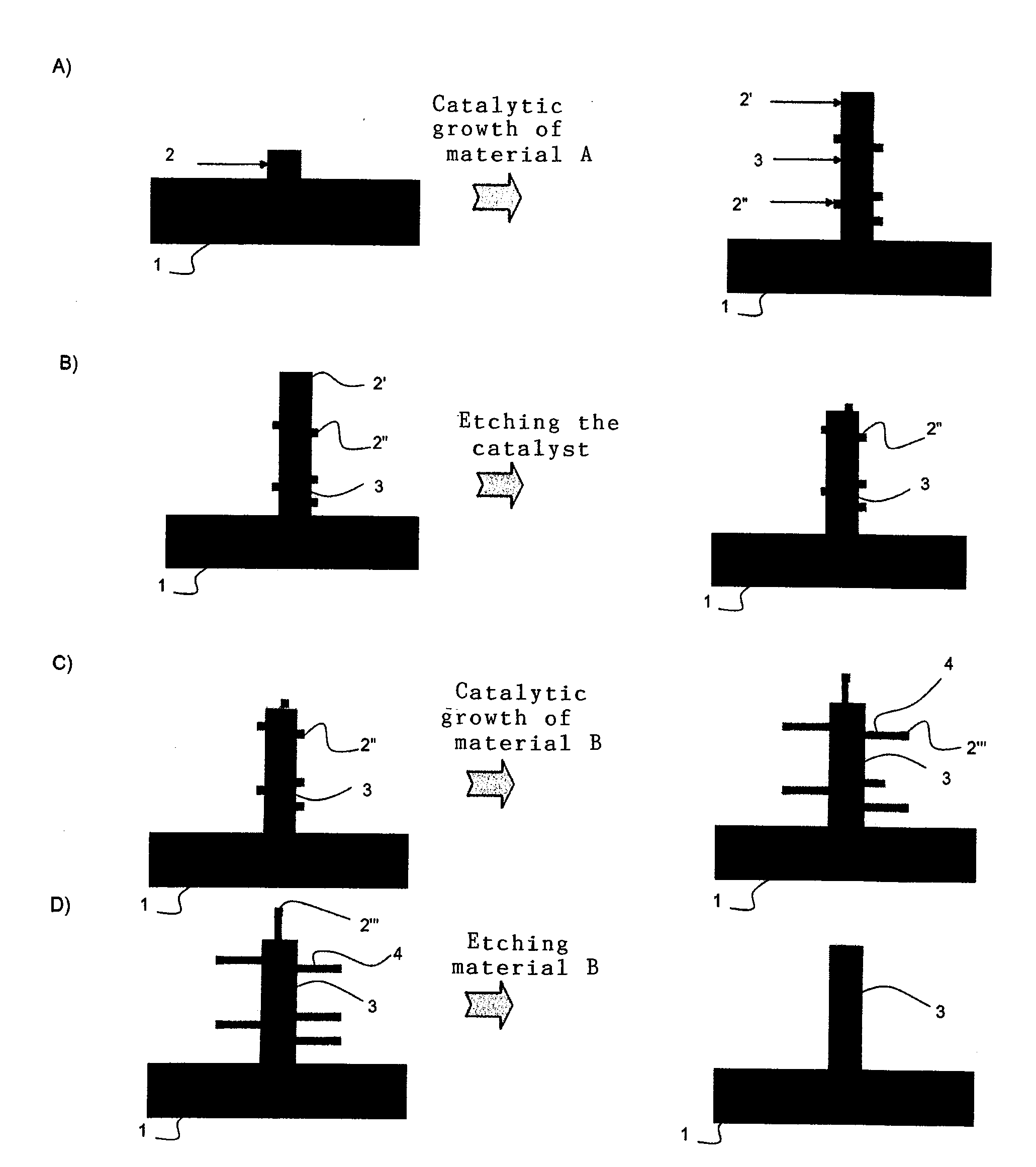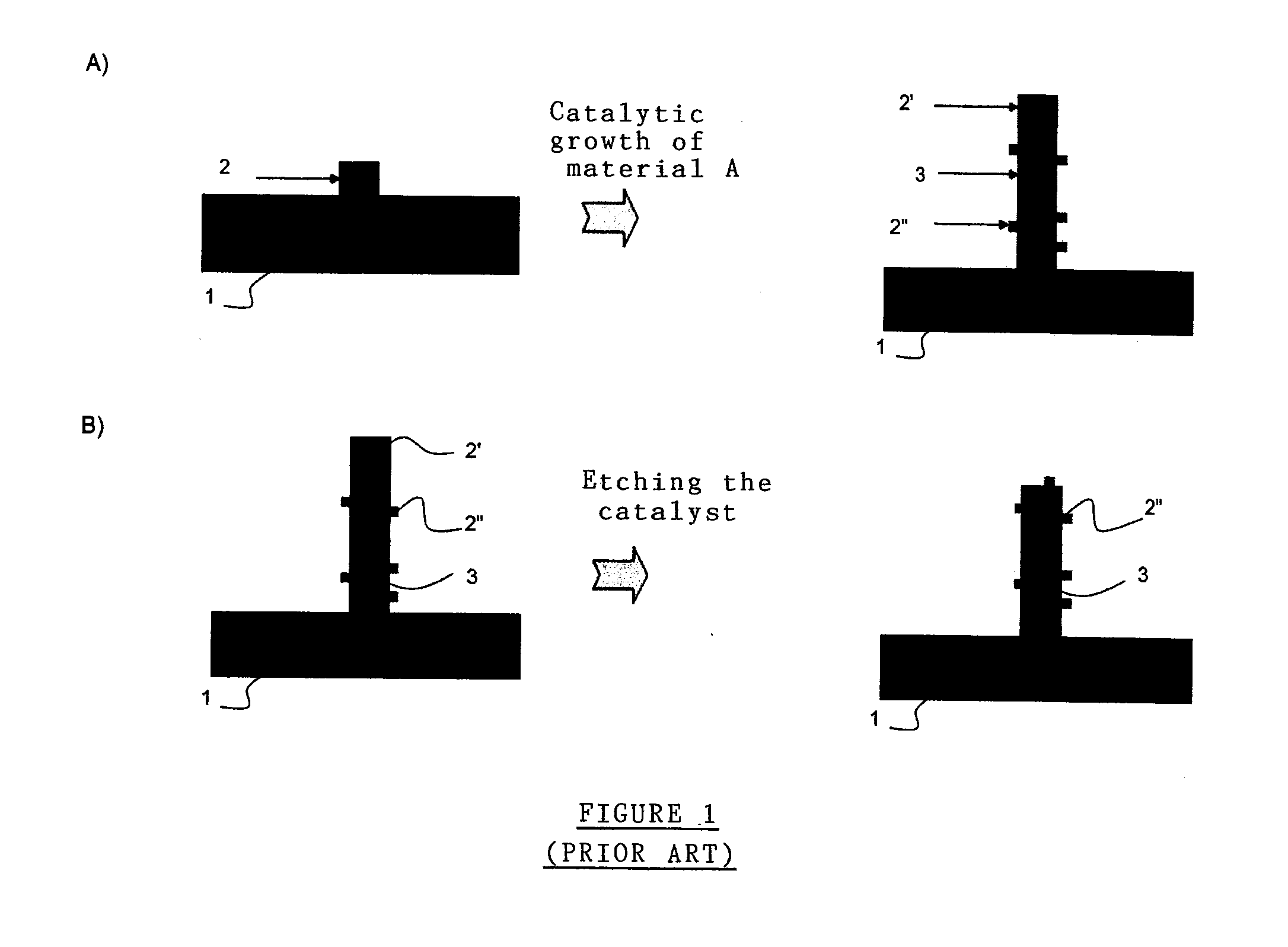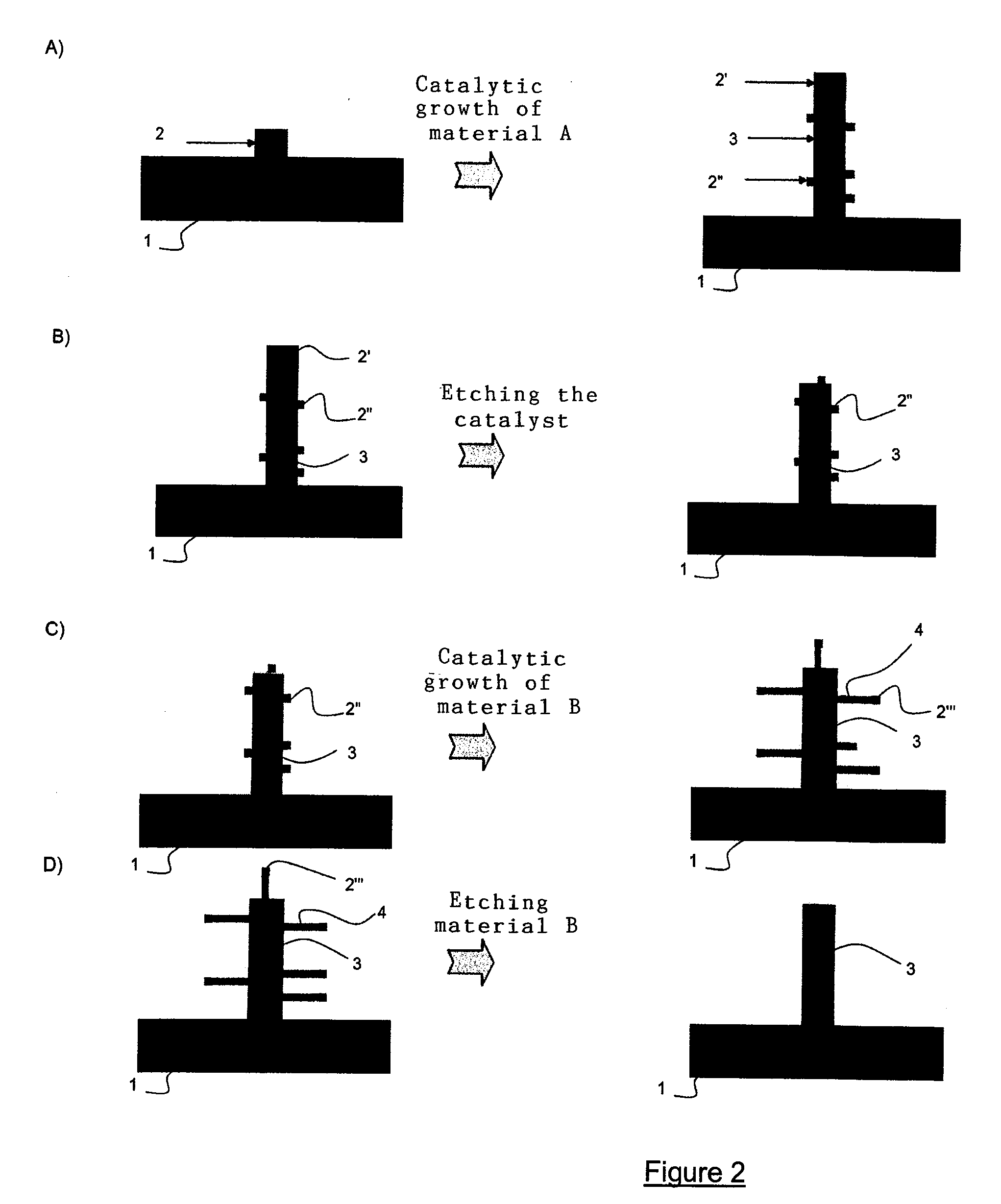Method for eliminating the metal catalyst residues on the surface of wires produced by catalytic growth
a metal catalyst and catalytic growth technology, applied in the field of nanoscale wires, can solve the problems of metal catalyst residues on the surface of wires, metal catalyst residues are harmful in respect of a large number of applications, and significant deterioration in the performance of devices
- Summary
- Abstract
- Description
- Claims
- Application Information
AI Technical Summary
Benefits of technology
Problems solved by technology
Method used
Image
Examples
example 1
2. Example 1
Step 1: Growing Silicon Nanowires
[0062]The main wire (3) is a silicon wire (Si=material A) 100 nanometers in diameter, developed using a metal catalyst of gold (2).
[0063]The operating conditions are as follows:[0064]colloidal gold nanoparticles (100 nm) on Si (111) substrate;[0065]T=650° C.;[0066]P=10 mbar;[0067]mix SiH4 (silane)+H2 (hydrogen);[0068]duration: 20 nm.
Step 2: Gold Etching
[0069]solution marketed under the reference “IKI2” by the Company VWR Prolabo, constituted by an aqueous solution of KI (potassium iodide) and iodine I2, at ambient temperature;[0070]duration: 10 nm.
Step 3: Growing Silicon-Germanium Nanowires
[0071]Catalytic growth of sacrificial wires (4) made of silicon-germanium. (Si1-xGex with x=0.4), from gold residues (2″) present on the surface of the main wire (3).
[0072]Operating conditions as follows:[0073]T=550° C.;[0074]P=10 mbar;[0075]mix SiH4 (silane)+GeH4 (germane)+H2 (hydrogen), with ratio [GeH4 flux / SiH4 flux]=1.5;[0076]duration 10 nm.
Step 4:...
example 2
3. Example 2
Step 1: Growing Nanowires of GaAs
[0081]The main wire (3) is a wire of gallium arsenide (GaAs=material A) 100 nm in diameter, developed using a metal catalyst of gold (2).
[0082]Operating conditions:[0083]colloidal gold nanoparticles (100 nm) on GaAs (111) substrate;[0084]T=450° C.;[0085]P=100 mbar;[0086]mix TMGa (trimethylgallium)+AsH3 (arsine);[0087]duration: 20 nm.
Step 2: Gold Etching
[0088]solution marketed under the reference “IKI2” by the Company VWR Prolabo, constituted by an aqueous solution of KI (potassium iodide) and iodine I2, at ambient temperature;[0089]duration: 10 nm.
Step 3: Growing Nanowires of InAs
[0090]Catalytic growth of sacrificial wires (4) of indium arsenide (InAs), from gold residues (2″) present on the surface of the main wire (3).
[0091]Operating conditions as follows:[0092]T=450° C.;[0093]P=100 mbar;[0094]mix TMIn (trimethylindium)+AsH3 (arsine);[0095]duration 10 nm.
Step 4: Etching Nanowires of InAs
PUM
 Login to View More
Login to View More Abstract
Description
Claims
Application Information
 Login to View More
Login to View More - R&D
- Intellectual Property
- Life Sciences
- Materials
- Tech Scout
- Unparalleled Data Quality
- Higher Quality Content
- 60% Fewer Hallucinations
Browse by: Latest US Patents, China's latest patents, Technical Efficacy Thesaurus, Application Domain, Technology Topic, Popular Technical Reports.
© 2025 PatSnap. All rights reserved.Legal|Privacy policy|Modern Slavery Act Transparency Statement|Sitemap|About US| Contact US: help@patsnap.com



